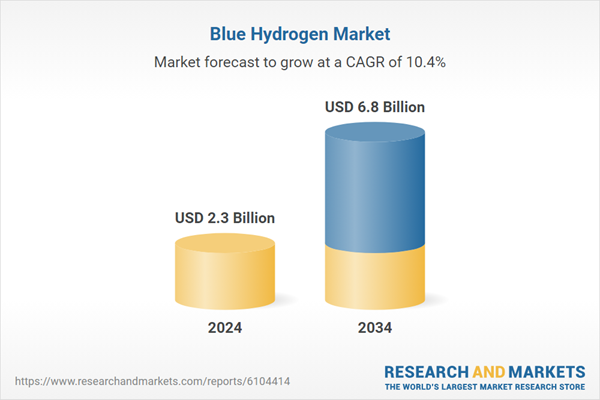With mounting pressure on industries to reduce emissions, the use of blue hydrogen - especially in energy-intensive sectors - is gaining momentum. Carbon capture and storage (CCS) solutions integrated with hydrogen facilities are playing a vital role in meeting climate objectives in segments like steel, ammonia, and oil refining. Additionally, blue hydrogen infrastructure is scalable, making it a viable long-term strategy for industrial decarbonization.
As cross-border collaborations grow, international partnerships are expected to further accelerate market development by delivering low-carbon hydrogen fuels across regional and global supply chains. These collaborative investments serve as a strong foundation for advancing clean energy initiatives. Supportive policy frameworks and an abundant supply of natural gas are encouraging the expansion of blue hydrogen production. Utilizing existing pipelines and storage systems also creates an economical pathway to decarbonize sectors where emission reductions are particularly challenging. Governments backing carbon capture and clean hydrogen policies continue to incentivize adoption in industrial operations globally.
The petroleum refining segment is forecasted to grow at a CAGR of 8.1% from 2025 to 2034. Demand for lower-emission hydrogen to reduce carbon footprints in refining operations remains strong. Stricter environmental regulations are pushing downstream operators to integrate blue hydrogen as part of their emissions compliance strategies. These developments are expected to enhance the segment’s share in the coming years as producers look to modernize and future-proof operations using cleaner fuel alternatives.
The ATR segment is projected to grow at a CAGR of 24.8% between 2025 and 2034, primarily due to its exceptional compatibility with carbon capture technologies and its ability to produce high-purity hydrogen efficiently. Unlike conventional reforming processes, ATR combines partial oxidation and steam reforming in a single reactor, making it more adaptable for integration with CCS systems. This dual-function approach enhances process efficiency and makes ATR a preferred choice for large-scale, low-carbon hydrogen production facilities.
United States Blue Hydrogen Market was valued at USD 1.02 billion in 2024. North America accounted for 54.4% of the share in 2024. This regional dominance is underpinned by the growth of global-scale partnerships and infrastructure developments geared toward establishing efficient hydrogen-ammonia export corridors. These international collaborations are helping the U.S. expand its role in the global hydrogen economy by increasing production capabilities and strengthening supply chains.
Leading participants in the Blue Hydrogen Market include BP, Woodside, ThyssenKrupp Industrial Solutions, Johnson Matthey, Maire Tecnimont, Saipem, Shell, SK E&S, TOPSOE, Technip Energies, Eni, Bechtel Corporation, Air Liquide, Exxon Mobil Corporation, John Wood Group, Air Products, and Equinor. To expand market share and reinforce their competitive standing, major players in the blue hydrogen sector are deploying a range of strategic initiatives. These include forming global joint ventures and partnerships to co-develop infrastructure for carbon capture and low-emission hydrogen distribution.
Several companies are retrofitting existing natural gas plants with advanced CCS technologies to scale production quickly and cost-effectively. Others are focusing on government collaborations to secure regulatory support, funding, and long-term contracts. Technological innovation also remains central, with continuous R&D investments being made to improve process efficiency and reduce the carbon intensity of production.
Comprehensive Market Analysis and Forecast
- Industry trends, key growth drivers, challenges, future opportunities, and regulatory landscape
- Competitive landscape with Porter’s Five Forces and PESTEL analysis
- Market size, segmentation, and regional forecasts
- In-depth company profiles, business strategies, financial insights, and SWOT analysis
This product will be delivered within 2-4 business days.
Table of Contents
COMPANIES MENTIONED
The companies featured in this blue hydrogen market report include:- Air Products
- Air Liquide
- Bechtel Corporation
- BP
- Eni
- Exxon Mobil Corporation
- Equinor
- John Wood Group
- Johnson Matthey
- MaireTecnimont
- Saipem
- SK E&S
- Shell
- Technip Energies
- TOPSOE
- thyssenkrupp Industrial Solutions
- Woodside
Table Information
| Report Attribute | Details |
|---|---|
| No. of Pages | 123 |
| Published | June 2025 |
| Forecast Period | 2024 - 2034 |
| Estimated Market Value ( USD | $ 2.3 Billion |
| Forecasted Market Value ( USD | $ 6.8 Billion |
| Compound Annual Growth Rate | 10.4% |
| Regions Covered | Global |
| No. of Companies Mentioned | 18 |









